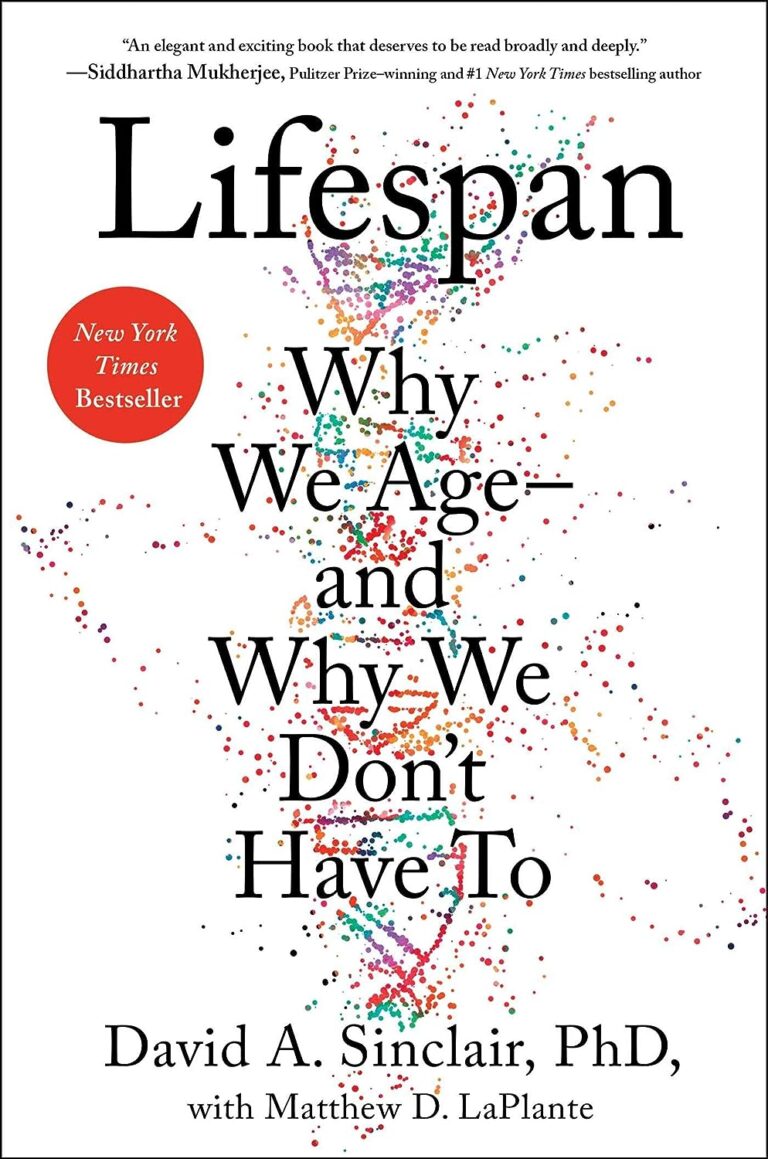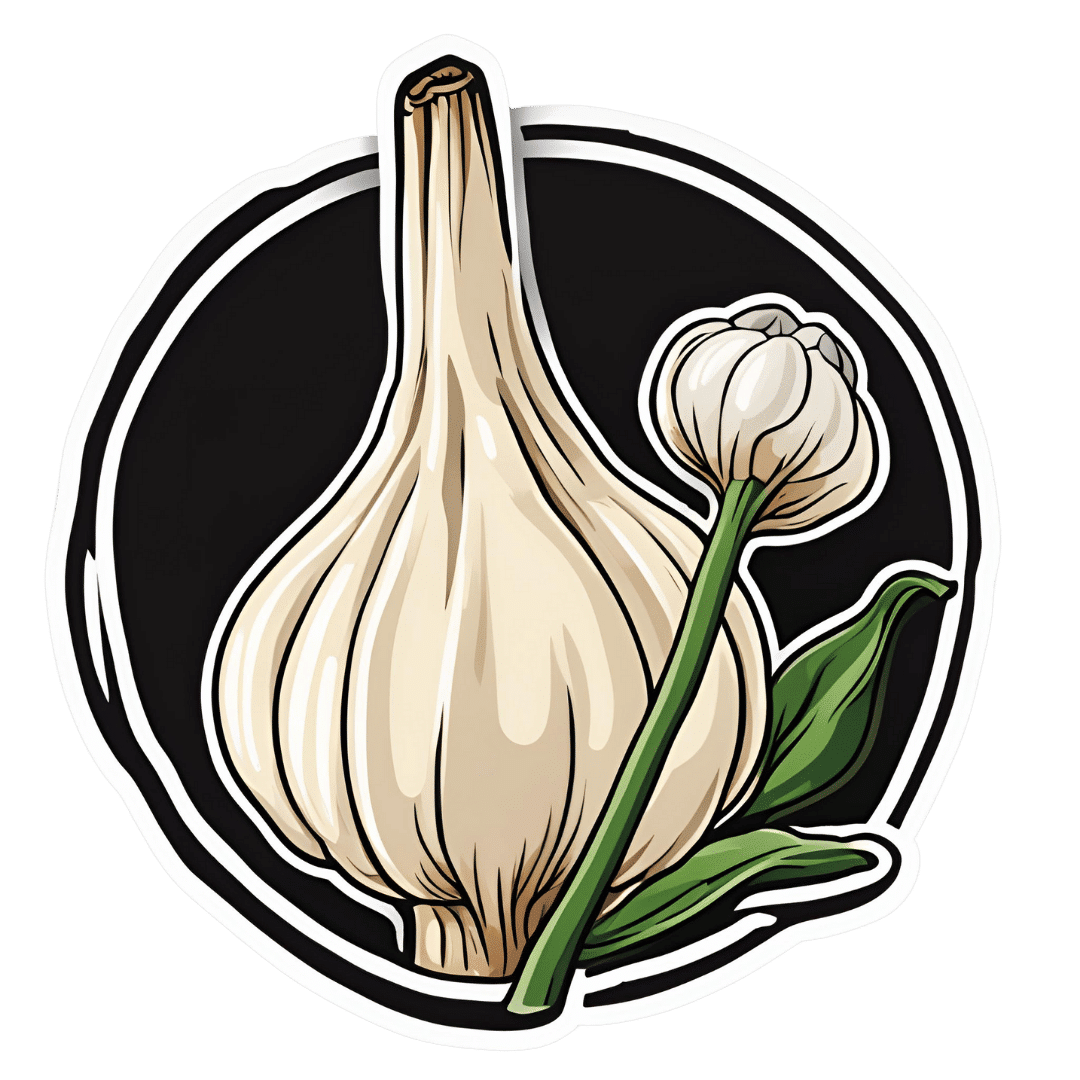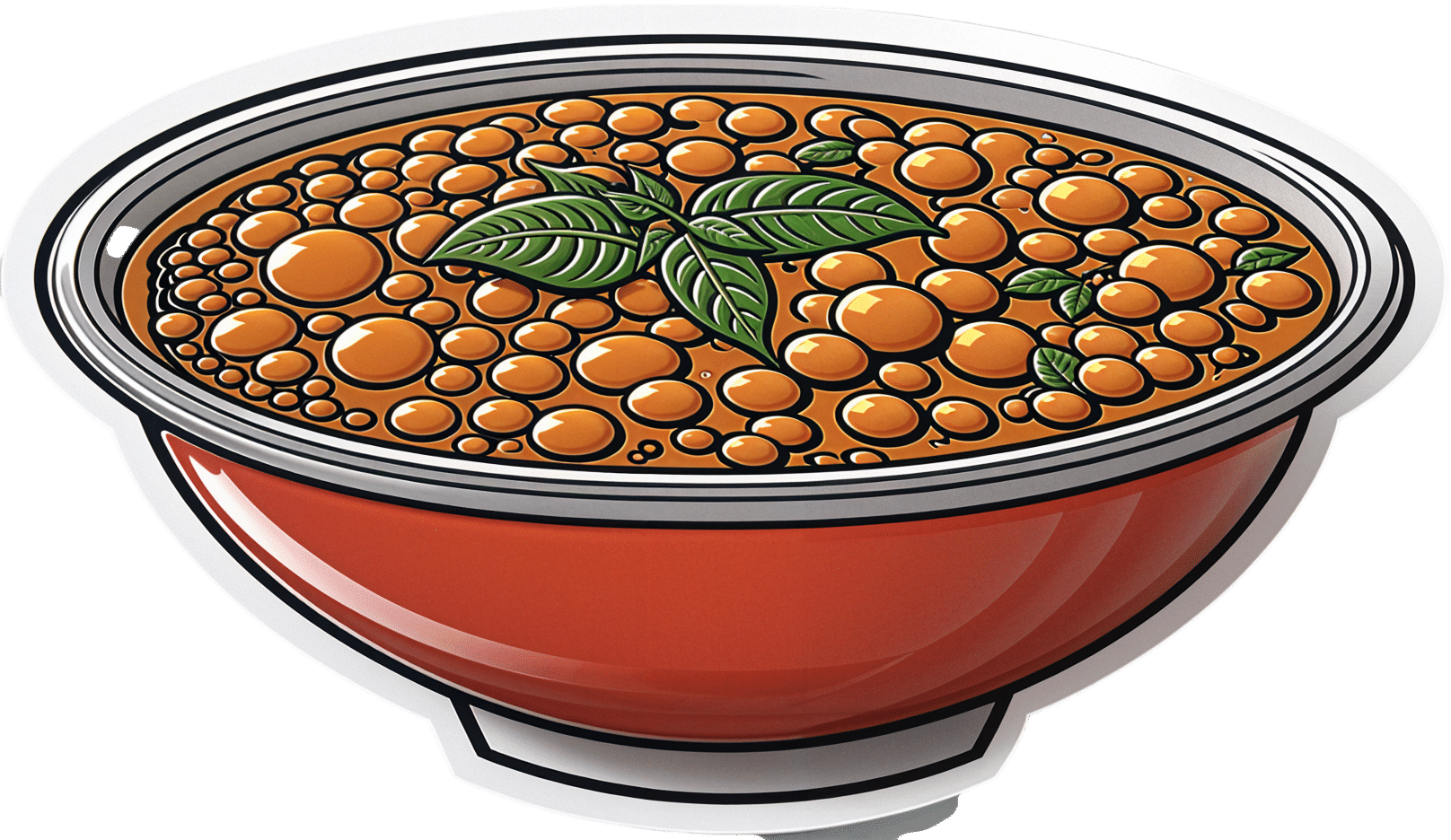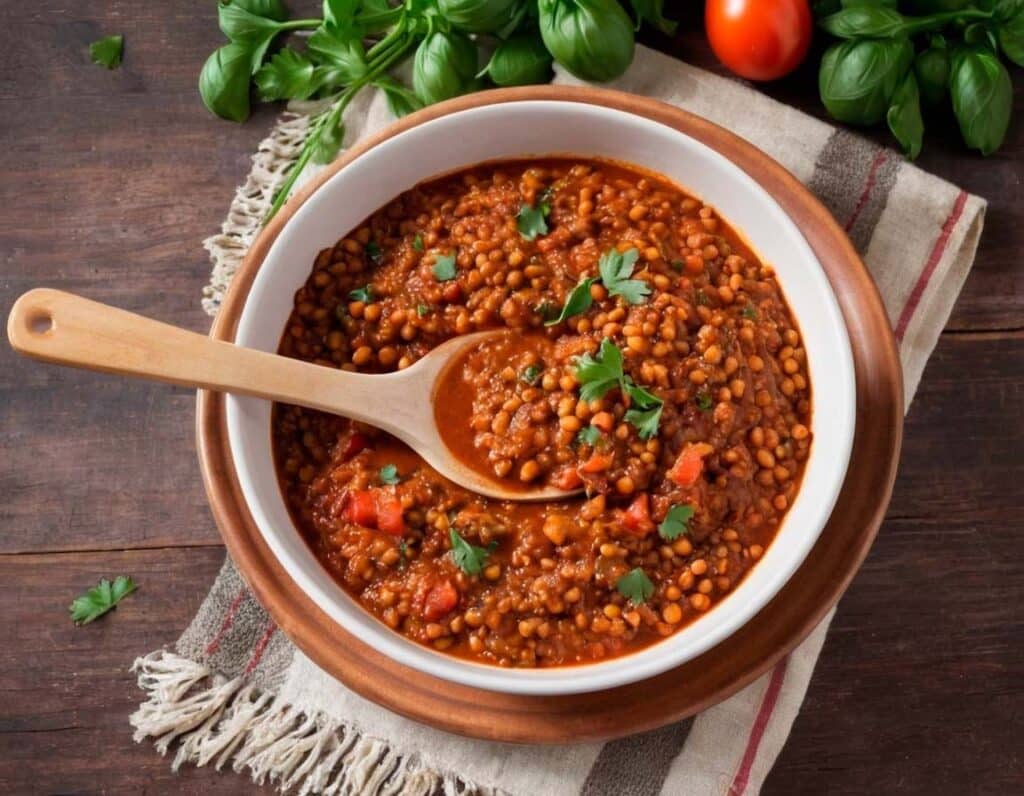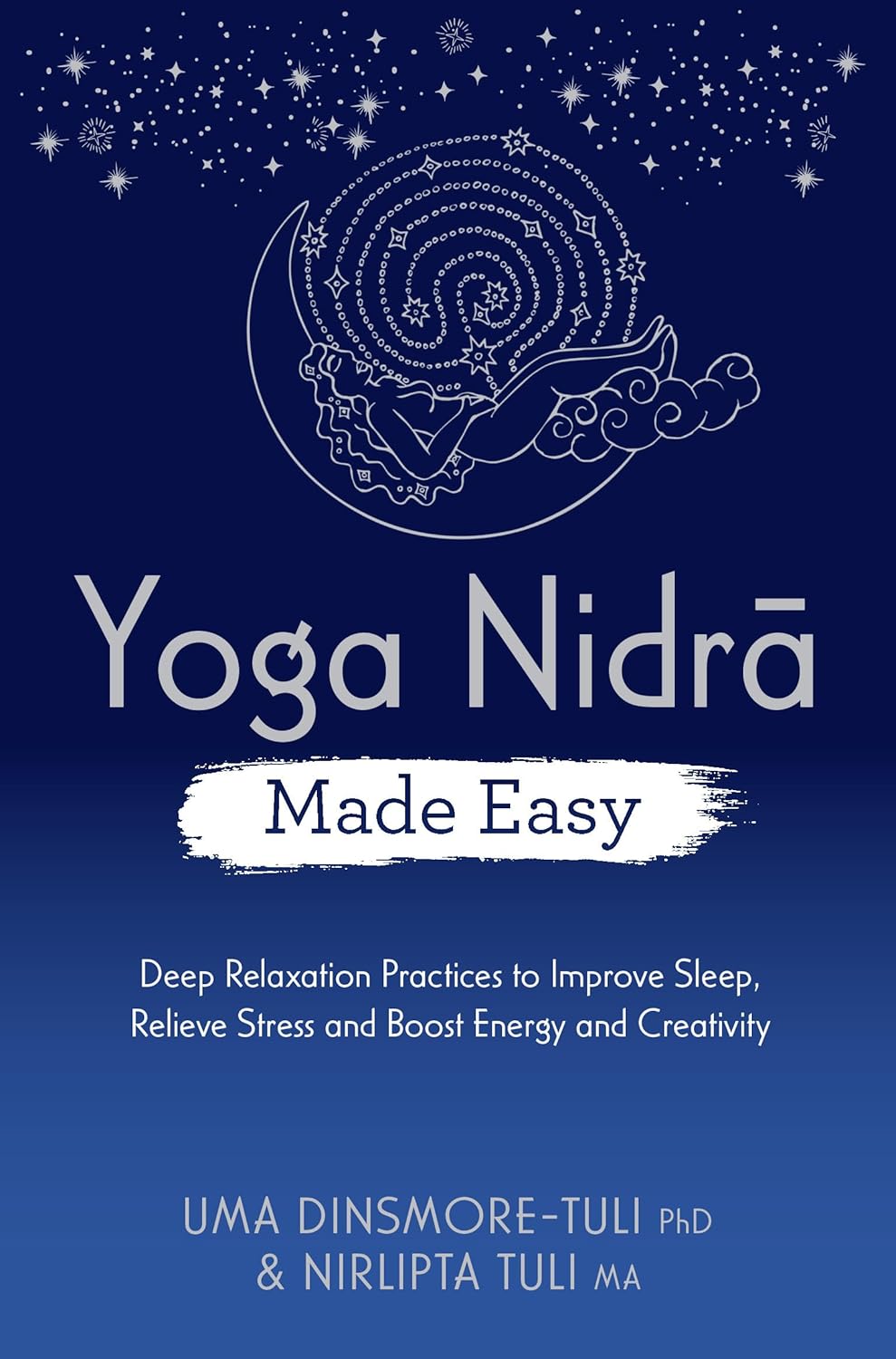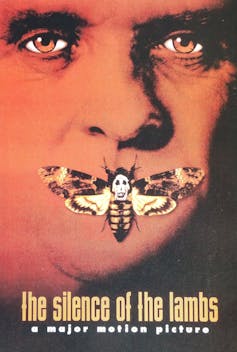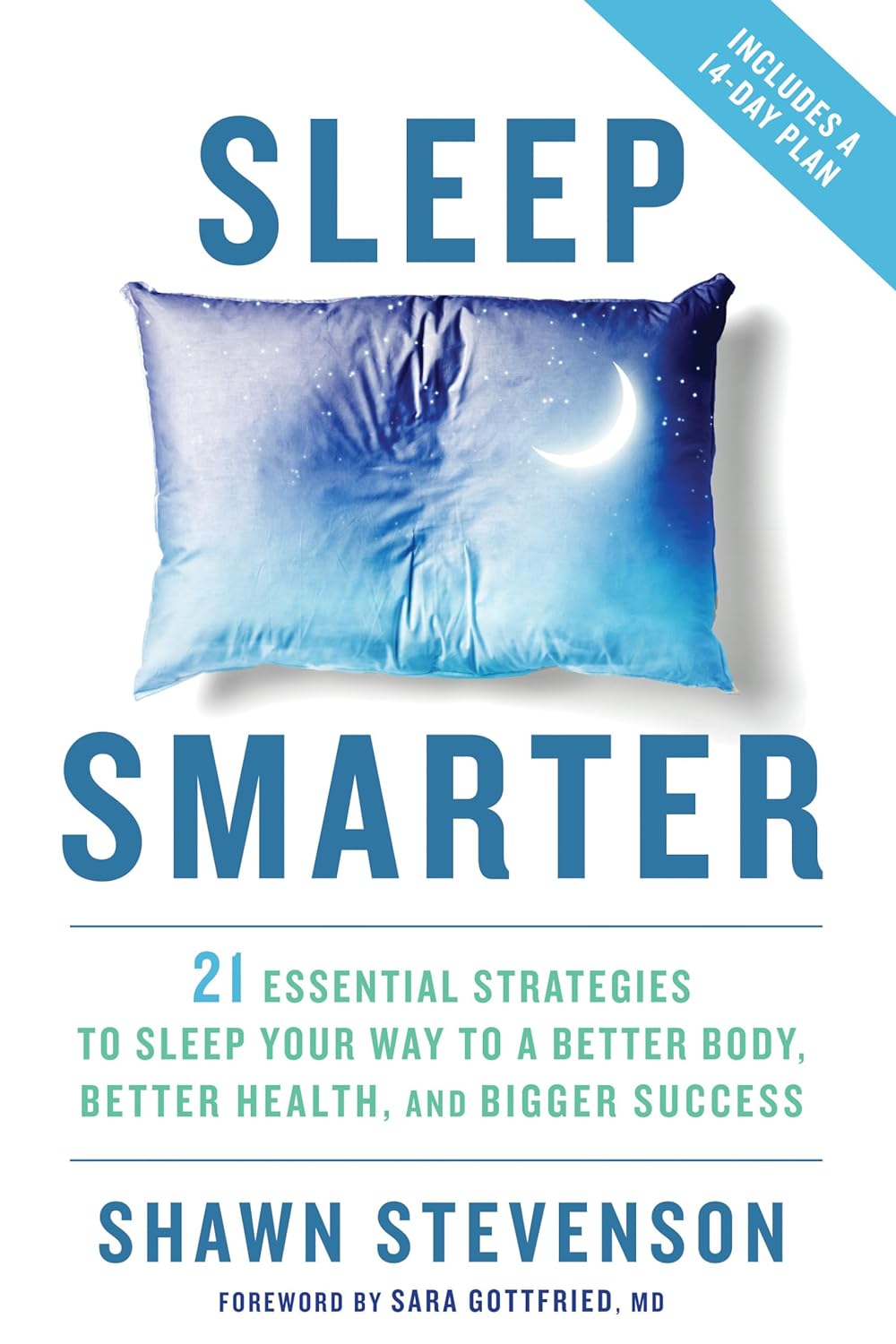
Sleep Smarter – by Shawn Stevenson
10almonds is reader-supported. We may, at no cost to you, receive a portion of sales if you purchase a product through a link in this article.
You probably know to avoid blue light before bed, put a curfew on the caffeine, and have fresh bedding. So, what does this book offer that’s new?
As the subtitle suggests, it’s 21 tips for better sleep, so if even half of them are new, then it’ll still be adding value.
This is a book review, not a book summary, but to give an idea of the kind of thing you might not already know: there’s a section on bedroom houseplants! For example…
- Which plants filter the air best according to NASA, rather than “according to tradition”
- Which plants will thrive in what will hopefully be a cool dark environment
- Which plants produce oxygen even at night, rather than just during the day
The writing style is personable without losing clarity or objectivity:
- We read personal anecdotes, and we read science
- We get “I tried this”, and we get “this sleep study found such-and-such”
- We get not just the “what”, but also the “why” and the “how”
We get the little changes that make a big difference—sometimes the difference between something working or not!
Bottom line: if you’d like to get better sleep and a blue light filter hasn’t wowed you and changed your life, this book will bring your sleep knowledge (and practice) to the next level.
Don’t Forget…
Did you arrive here from our newsletter? Don’t forget to return to the email to continue learning!
Recommended
Learn to Age Gracefully
Join the 98k+ American women taking control of their health & aging with our 100% free (and fun!) daily emails:
-
What Happens To Your Body When You Eat Raw Garlic Everyday
10almonds is reader-supported. We may, at no cost to you, receive a portion of sales if you purchase a product through a link in this article.
Garlic’s benefits are not all in its most talked-about active compound, allicin (some are in other parts of the garlic), but the allicin is certainly very potent. However, allicin breaks down easily, which means that cooking reduces its value greatly, meaning that for health purposes, it is best consumed raw. Pickled garlic cloves are great, by the way, and you should try them if you haven’t already.
Garlic’s benefits (aside from being delicious)
Benefits that can be expected include:
- Boosts immunity: allicin enhances white blood cell function, helping fight off colds and flu
- Supports heart health: lowers blood pressure, reduces cholesterol, and prevents blood clots, reducing the risk of heart disease and stroke
- Anti-cancer properties: it contains sulfur compounds that may inhibit cancer cell growth, particularly in the digestive system
- Improves digestion: stimulates digestive enzymes and promotes gut health, helping with better nutrient absorption and digestion
- Enhances brain function: antioxidants in garlic are neuroprotective, reducing cognitive decline
- Good for your skin: its antibacterial and anti-inflammatory properties can help improve skin health
- Regulates blood sugar levels: helps regulate blood sugar and improves insulin sensitivity
- Anti-inflammatory effects: contains compounds that reduce inflammation, helping to combat inflammatory diseases such as arthritis
- Supports weight loss: stimulates metabolism, suppresses appetite, and helps break down fats, aiding in weight management
- May protect against osteoporosis: increases estrogen levels in women, potentially reducing the risk of osteoporosis (no effect on estrogen levels if you don’t have ovaries)
The daily dose that this video recommends is 1–2 cloves of garlic or 3600mg of aged garlic extract as a supplement.
For more on all of these, enjoy:
Click Here If The Embedded Video Doesn’t Load Automatically!
Want to learn more?
You might also like to read:
The Many Health Benefits Of Garlic
Take care!
Share This Post
-
You’ve Got Questions? We’ve Got Answers!
10almonds is reader-supported. We may, at no cost to you, receive a portion of sales if you purchase a product through a link in this article.
From Cucumbers To Kindles
Q: Where do I get cucumber extract?
A: You can buy it from BulkSupplements.com (who, despite their name, start at 100g packs)
Alternatively: you want it as a topical ointment (for skin health) rather than as a dietary supplement (for bone and joint health), you can extract it yourself! No, it’s not “just juice cucumbers”, but it’s also not too tricky.
Click Here For A Quick How-To Guide!
Q: Tips for reading more and managing time for it?
A: We talked about this a little bit in yesterday’s edition, so you may have seen that, but aside from that:
- If you don’t already have one, consider getting a Kindle or similar e-reader. They’re very convenient, and also very light and ergonomic—no more wrist strain as can occur with physical books. No more eye-strain, either!
- Consider making reading a specific part of your daily routine. A chapter before bed can be a nice wind-down, for instance! What’s important is it’s a part of your day that’ll always, or at least almost always, allow you to do a little reading.
- If you drive, walk, run, or similar each day, a lot of people find that’s a great time to listen to an audiobook. Please be safe, though!
- If your lifestyle permits such, a “reading retreat” can be a wonderful vacation! Even if you only “retreat” to your bedroom, the point is that it’s a weekend (or more!) that you block off from all other commitments, and curl up with the book(s) of your choice.
Q: Any study tips as we approach exam season? A lot of the productivity stuff is based on working life, but I can’t be the only student!
A: We’ve got you covered:
- Be passionate about your subject! We know of no greater study tip than that.
- Find a willing person and lecture them on your subject. When one teaches, two learn!
- Your mileage may vary depending on your subject, but, find a way of studying that’s fun to you!
- If you can get past papers, get as many as you can, and use those as your “last minute” studying in the week before your exam(s). This will prime you for answering exam-style questions (and leverage state-dependent memory). As a bonus, it’ll also help ease any anxiety, because by the time of your exam it’ll be “same old, same old”!
Q: Energy drinks for biohacking, yea or nay?
A: This is definitely one of those “the dose makes the poison” things!
- Caffeine, in and of itself, can be healthy in moderation for most people.
- Taurine has assorted benefits at safe dosages:
- Other ingredients often have health benefits too.
But… The generally agreed safe dose of taurine is around 3g/day for most people; a standard Red Bull contains 1g.
That math would be simple, but… if you eat meat (including poultry or fish), that can also contain 10–950mg per 100g. For example, tuna is at the high end of that scale, with a standard 12oz (340g) tin already containing up to 3.23g of taurine!
And sweetened carbonated beverages in general have so many health issues that it’d take us a full article to cover them.
Short version? Enjoy in moderation if you must, but there are definitely better ways of getting the benefits they may offer.
Q: Best morning routine?
A: The best morning routine is whatever makes you feel most ready to take on your day!
This one’s going to vary a lot—one person’s morning run could be another person’s morning coffee and newspaper, for example.
In a nutshell, though, ask yourself these questions:
- How long does it take me to fully wake up in the morning, and what helps or hinders that?
- When I get out of bed, what do I really need before I can take on my day?
- If I could have the perfect morning, what would it look like?
- What can evening me do, to look after morning me’s best interests? (Semi-prepare breakfast ready? Lay out clothes ready? Running shoes? To-Do list?)
Q: I’m curious how much of these things you actually use yourselves, and are there any disagreements in the team? In a lot of places things can get pretty heated when it’s paleo vs vegan / health benefits of tea/coffee vs caffeine-abstainers / you need this much sleep vs rise and grinders, etc?
A: We are indeed genuinely enthusiastic about health and productivity, and that definitely includes our own! We may or may not all do everything, but between us, we probably have it all covered. As for disagreements, we’ve not done a survey, but if you take an evidence-based approach, any conflict will tend to be minimized. Plus, sometimes you can have the best of both!
- You could have a vegan paleo diet (you’d better love coconut if you do, though!
- There is decaffeinated coffee and tea (your taste may vary)
- You can get plenty of sleep and rise early (so long as an “early to bed, early to rise” schedule suits you!)
Interesting note: humans are social creatures on an evolutionary level. Evolution has resulted in half of us being “night owls” and the other half “morning larks”, the better to keep each other safe while sleeping. Alas, modern life doesn’t always allow us to have the sleep schedule that’d suit each of us best individually!
Have a question you’d like answered? Reply to this email, or use the feedback widget at the bottom! We always love to hear from you
Share This Post
-
Hearty Healthy Ragù
10almonds is reader-supported. We may, at no cost to you, receive a portion of sales if you purchase a product through a link in this article.
Ragù is a traditional Italian meaty sauce with tomato, and is the base for a number of other Italian dishes. It can be enjoyed as-is, or with very minor modifications can be turned into a Bolognese sauce or a lasagna filling or various other things. Our variations from tradition are mainly twofold here: we’re using nutrition-packed lentils instead of meat (but with a couple of twists that make them meatier), and we’re not using wine.
Traditionally, red wine is used in a ragù (white wine if you want to make it into a Bolognese sauce, by the way), but with all we’re doing it’s not necessary. If you want to add a splash of wine, we’re not going to call that a healthy ingredient, but we’re also not the boss of you
You will need
- 1 large onion (or equivalent small ones), chopped roughly
- 1 bulb garlic (or to your heart’s content), chopped finely or crushed
- 4 large tomatoes, chopped (or 2 cans chopped tomatoes)
- 1 tube (usually about 7 oz) tomato purée
- 1 cup brown lentils (green lentils will do if you can’t get brown)
- 1 tbsp chia seeds
- 1 tbsp black pepper, cracked or coarse ground
- 1 bunch fresh basil, finely chopped (or 1 tbsp, freeze-dried)
- 1 bunch fresh oregano, finely chopped (or 1 tbsp, freeze-dried)
- 1 tbsp nutritional yeast (failing that, 1 tbsp yeast extract, yes, even if you don’t like it, we promise it won’t taste like it once it’s done; it just makes the dish meatier in taste and also adds vitamin B12)
- 1 tsp cumin, ground (note that this one was tsp, not tbsp like the others)
- 1 tsp MSG, or 2 tsp low-sodium salt
- 4 cups water
- Olive oil for frying (ideally Extra Virgin, but so long as it’s at least marked virgin olive oil and not cut with other oils, that’s fine)
- Parsley, chopped, to garnish
Method
(we suggest you read everything at least once before doing anything)
1) Put the lentils in a small saucepan, or if you have one, a rice cooker (the rice cooker is better; works better and requires less attention), adding the chia seeds, MSG or low sodium salt, and nutritional yeast (or yeast extract). as well as the cumin. Add 4 cups boiling water and turn on the heat to cook them. This will probably take about 15–20 minutes; you want the lentils to be soft; a tiny bit past al dente, but not so far as mushy.
2) Fry the onion in some olive oil in a big pan (everything is going in here eventually if the pan is big enough; if it isn’t, you’ll need to transfer to a bigger pan in a bit). Once they’re nearly done, throw in the garlic too. If the lentils aren’t done yet, take the onions and garlic off the heat while you wait. After a few times of doing this recipe, you’ll be doing everything like clockwork and it’ll all align perfectly.
3) Drain the lentils (if all the water wasn’t absorbed; again, after doing it a few times, you’ll just use the right amount of water for your apparatus) but don’t rinse them (remember you put seasonings in here!), and add them to the pan with the onions and garlic; add a splash more olive oil if necessary, and stir until all the would-be-excess fat is absorbed into the lentils.
Note: the excess fat to be absorbed by the lentils was a feature not a bug; we wanted a little fat in the lentils! Makes the dish meatier and tastier, as well as more nutrient-dense.
4) add the tomatoes and tomato purée, stirring them in thoroughly; add the basil and oregano too and stir those in as well. Set it on a low heat for at least 10–15 minutes, stirring occasionally to let the flavors blend.
(if you happen to be serving pasta with it, then the time it takes to boil water and cook the pasta is a good time for the flavors to do their thing)
5) take it off the heat, and add the parsley garnish. It’s done!
Enjoy!
Want to learn more?
For those interested in some of the science of what we have going on today:
- What Is The Mediterranean Diet, Anyway?
- Four Ways To Upgrade The Mediterranean
- Eat More (Of This) For Lower Blood Pressure ← one more reason for the brown lentils today
- Chia: The Tiniest Seeds With The Most Value
- Black Pepper’s Impressive Anti-Cancer Arsenal
- The Many Health Benefits of Garlic
- Olive Oil: Is “Extra Virgin” Worth It?
Take care!
Share This Post
Related Posts
-
Yoga Nidra Made Easy – by Dr. Uma Dinsmore-Tuli and Nirlipta Tuli
10almonds is reader-supported. We may, at no cost to you, receive a portion of sales if you purchase a product through a link in this article.
We’ve reviewed books about yoga before, and about sleep. This one’s different.
It’s about a yogic practice that can be used to promote restful sleep—or just be a non-sleeping exercise that nonetheless promotes relaxation and recuperation.
While yoga nidra is as somatic as it is psychological, its corporeal aspects are all explored in a lying-down-on-one’s-back state. This isn’t a book of stretches and poses and such—those are great, but are simply not needed for this practice.
The authors explain, step-by-step, simply and clearly, how to practice yoga nidra, and get out of it what you want to (there are an assortment of possible outcomes, per your preference; there are options to choose along the way).
A lot of books about yoga, even when written in English, contain a lot of Sanskrit terms. This one doesn’t. And, that difference goes a long way to living up to the title of making this easy, for those of us who regrettably don’t read even transliterated Sanskrit.
Bottom line: if ever you struggle to relax, struggle to sleep, or struggle to find your get-up-and-go, this book provides all you need to engage in this very restorative practice!
Click here to check out Yoga Nidra Made Easy, and learn this restorative tool for yourself!
Don’t Forget…
Did you arrive here from our newsletter? Don’t forget to return to the email to continue learning!
Learn to Age Gracefully
Join the 98k+ American women taking control of their health & aging with our 100% free (and fun!) daily emails:
-
What’s the difference between a psychopath and a sociopath? Less than you might think
10almonds is reader-supported. We may, at no cost to you, receive a portion of sales if you purchase a product through a link in this article.
Articles about badly behaved people and how to spot them are common. You don’t have to Google or scroll too much to find headlines such as 7 signs your boss is a psychopath or How to avoid the sociopath next door.
You’ll often see the terms psychopath and sociopath used somewhat interchangeably. That applies to perhaps the most famous badly behaved fictional character of all – Hannibal Lecter, the cannibal serial killer from The Silence of the Lambs.
In the book on which the movie is based, Lecter is described as a “pure sociopath”. But in the movie, he’s described as a “pure psychopath”. Psychiatrists have diagnosed him with something else entirely.
So what’s the difference between a psychopath and a sociopath? As we’ll see, these terms have been used at different times in history, and relate to some overlapping concepts.
Benoit Daoust/Shutterstock What’s a psychopath?
Psychopathy has been mentioned in the psychiatric literature since the 1800s. But the latest edition of the Diagnostic Statistical Manual of Mental Disorders (known colloquially as the DSM) doesn’t list it as a recognised clinical disorder.
Since the 1950s, labels have changed and terms such as “sociopathic personality disturbance” have been replaced with antisocial personality disorder, which is what we have today.
Was Hannibal Lecter from The Silence of the Lambs a psychopath, a sociopath or something else entirely? Ralf Liebhold/Shutterstock Someone with antisocial personality disorder has a persistent disregard for the rights of others. This includes breaking the law, repeated lying, impulsive behaviour, getting into fights, disregarding safety, irresponsible behaviours, and indifference to the consequences of their actions.
To add to the confusion, the section in the DSM on antisocial personality disorder mentions psychopathy (and sociopathy) traits. In other words, according to the DSM the traits are part of antisocial personality disorder but are not mental disorders themselves.
US psychiatrist Hervey Cleckley provided the first formal description of psychopathy traits in his 1941 book The Mask of Sanity. He based his description on his clinical observations of nine male patients in a psychiatric hospital. He identified several key characteristics, including superficial charm, unreliability and a lack of remorse or shame.
Canadian psychologist Professor Robert Hare refined these characteristics by emphasising interpersonal, emotional and lifestyle characteristics, in addition to the antisocial behaviours listed in the DSM.
When we draw together all these strands of evidence, we can say a psychopath manipulates others, shows superficial charm, is grandiose and is persistently deceptive. Emotional traits include a lack of emotion and empathy, indifference to the suffering of others, and not accepting responsibility for how their behaviour impacts others.
Finally, a psychopath is easily bored, sponges off others, lacks goals, and is persistently irresponsible in their actions.
So how about a sociopath?
The term sociopath first appeared in the 1930s, and was attributed to US psychologist George Partridge. He emphasised the societal consequences of behaviour that habitually violates the rights of others.
Academics and clinicians often used the terms sociopath and psychopath interchangeably. But some preferred the term sociopath because they said the public sometimes confused the word psychopath with psychosis.
“Sociopathic personality disturbance” was the term used in the first edition of the DSM in 1952. This aligned with the prevailing views at the time that antisocial behaviours were largely the product of the social environment, and that behaviours were only judged as deviant if they broke social, legal, and/or cultural rules.
Some of these early descriptions of sociopathy are more aligned with what we now call antisocial personality disorder. Others relate to emotional characteristics similar to Cleckley’s 1941 definition of a psychopath.
In short, different people had different ideas about sociopathy and, even today, sociopathy is less-well defined than psychopathy. So there is no single definition of sociopathy we can give you, even today. But in general, its antisocial behaviours can be similar to ones we see with psychopathy.
Over the decades, the term sociopathy fell out of favour. From the late 60s, psychiatrists used the term antisocial personality disorder instead.
Born or made?
Both “sociopathy” (what we now call antisocial personality disorder) and psychopathy have been associated with a wide range of developmental, biological and psychological causes.
For example, people with psychopathic traits have certain brain differences especially in regions associated with emotions, inhibition of behaviour and problem solving. They also appear to have differences associated with their nervous system, including a reduced heart rate.
However, sociopathy and its antisocial behaviours are a product of someone’s social environment, and tends to run in families. These behaviours has been associated with physical abuse and parental conflict.
What are the consequences?
Despite their fictional portrayals – such as Hannibal Lecter in Silence of the Lambs or Villanelle in the TV series Killing Eve – not all people with psychopathy or sociopathy traits are serial killers or are physically violent.
But psychopathy predicts a wide range of harmful behaviours. In the criminal justice system, psychopathy is strongly linked with re-offending, particularly of a violent nature.
In the general population, psychopathy is associated with drug dependence, homelessness, and other personality disorders. Some research even showed psychopathy predicted failure to follow COVID restrictions.
But sociopathy is less established as a key risk factor in identifying people at heightened risk of harm to others. And sociopathy is not a reliable indicator of future antisocial behaviour.
In a nutshell
Neither psychopathy nor sociopathy are classed as mental disorders in formal psychiatric diagnostic manuals. They are both personality traits that relate to antisocial behaviours and are associated with certain interpersonal, emotional and lifestyle characteristics.
Psychopathy is thought to have genetic, biological and psychological bases that places someone at greater risk of violating other people’s rights. But sociopathy is less clearly defined and its antisocial behaviours are the product of someone’s social environment.
Of the two, psychopathy has the greatest use in identifying someone who is most likely to cause damage to others.
Bruce Watt, Associate Professor in Psychology, Bond University and Katarina Fritzon, Associate Professor of Psychology, Bond University
This article is republished from The Conversation under a Creative Commons license. Read the original article.
Don’t Forget…
Did you arrive here from our newsletter? Don’t forget to return to the email to continue learning!
Learn to Age Gracefully
Join the 98k+ American women taking control of their health & aging with our 100% free (and fun!) daily emails:
-
Garden Cress vs Watercress – Which is Healthier?
10almonds is reader-supported. We may, at no cost to you, receive a portion of sales if you purchase a product through a link in this article.
Our Verdict
When comparing garden cress to watercress, we picked the garden cress.
Why?
While watercress is (rightly!) popularly viewed as a superfood for its nutritional density, the garden variety actually outperforms it.
In terms of macros first, garden cress has more protein, carbs, and fiber, while also having the lower glycemic index. Not that anyone’s getting blood sugar spikes from eating any kind of cress, but still, by the numbers, this is a clear win on the whole for garden cress in the category of macros.
When it comes to vitamins, garden cress has a lot (tens of times) more of vitamins A, B2, B3, B6, B7, B9, C, K, and choline, while watercress has (slightly) more of vitamins B1, B5, and E. An easy win for garden cress.
In the category of minerals, garden cress has more copper, iron, magnesium, manganese, phosphorus, and potassium, while watercress has more calcium. Another clear win for garden cress.
Taking a quick peep at polyphenols in case there’s anything to offset the above, garden cress has 13x more kaempferol (13mg/100g to watercress’s 1mg/100g), and/but watercress, in its favor, has quercetin (at 4mg/100g), which garden cress doesn’t. So, we say this category is also a win for garden cress, but watercress has its merits too.
👆 Let’s clarify: those numbers are all very good, and garden cress’s 13mg/100g kaempferol is absurdly high; most such quotients of most edible plants are orders of magnitude smaller; not to shoehorn in another vegetable, but just to give an example, savoy cabbage, which won on nutritional density vs bok choi recently, has 0.26mg/100g kaempferol and 0.12mg/100g quercetin (which were already very respectable numbers), so you see the difference in cress’s exceptionally generous delivery of these polyphenols!
Adding up the sections makes for an overwhelming win for garden cress!
Want to learn more?
You might like to read:
Sprout Your Seeds, Grains, Beans, Etc ← cress is a great example of this!
Take care!
Don’t Forget…
Did you arrive here from our newsletter? Don’t forget to return to the email to continue learning!
Learn to Age Gracefully
Join the 98k+ American women taking control of their health & aging with our 100% free (and fun!) daily emails:

